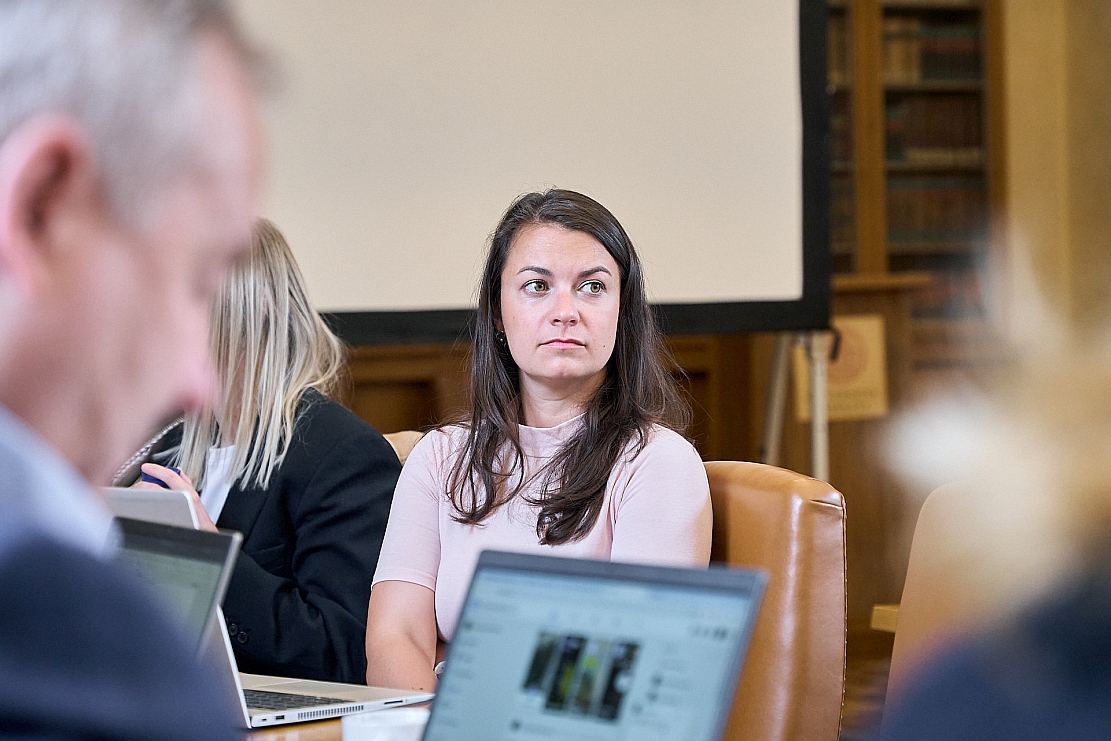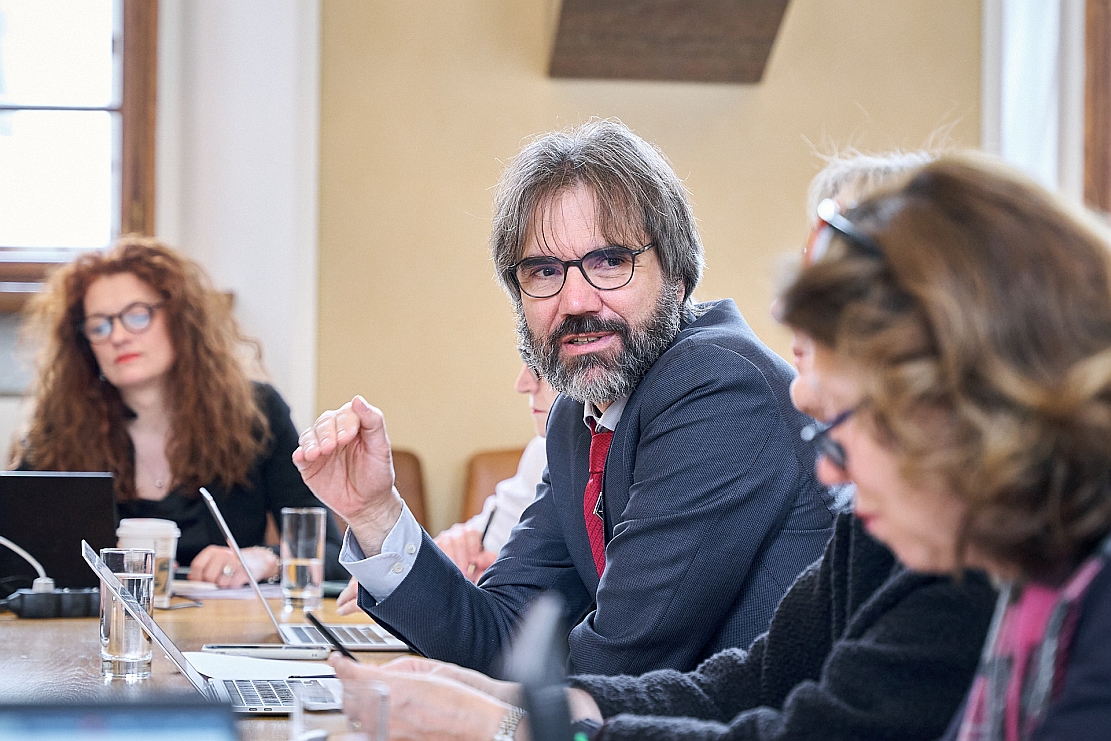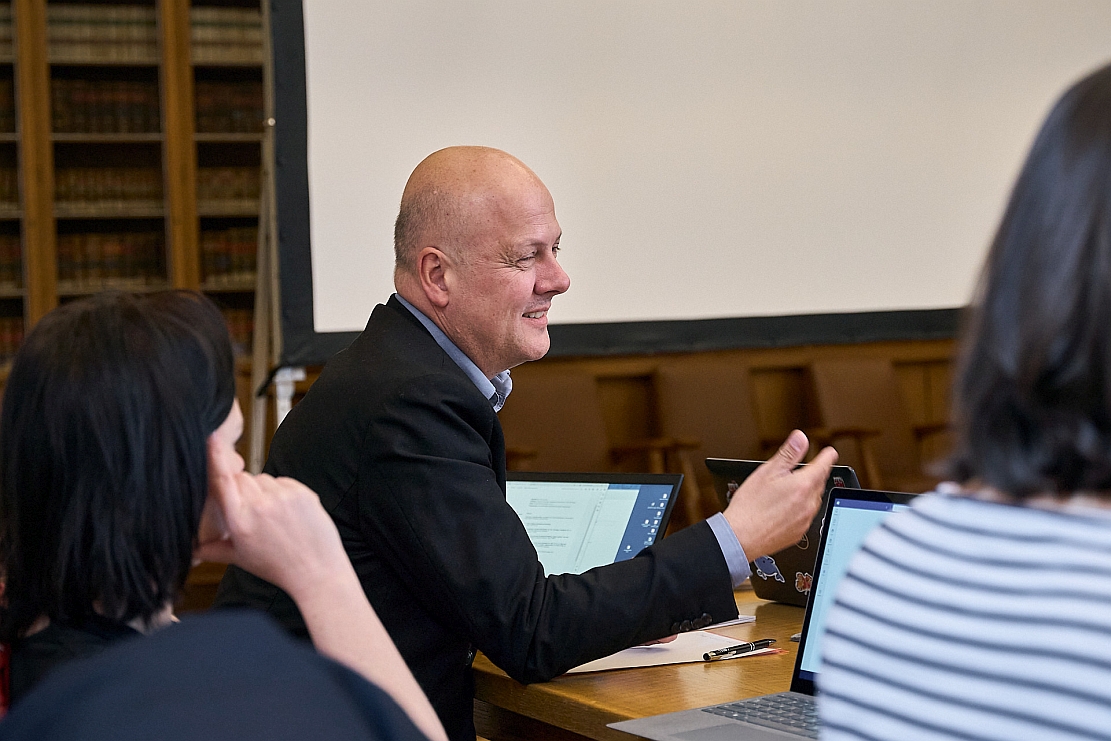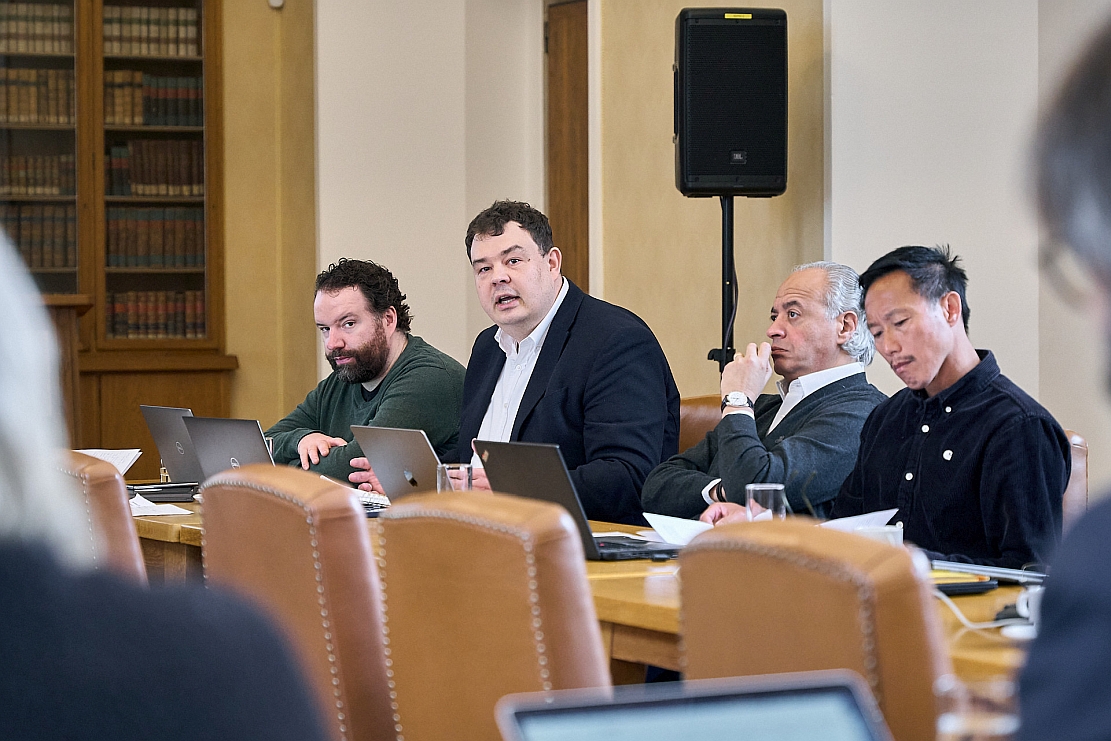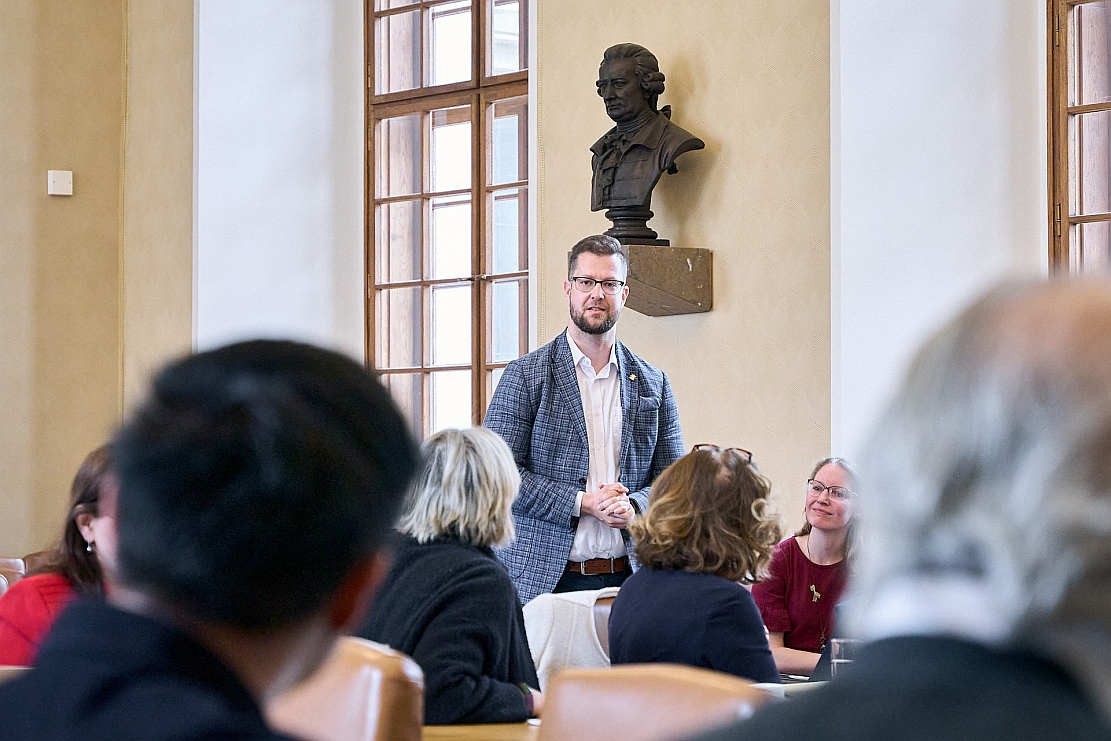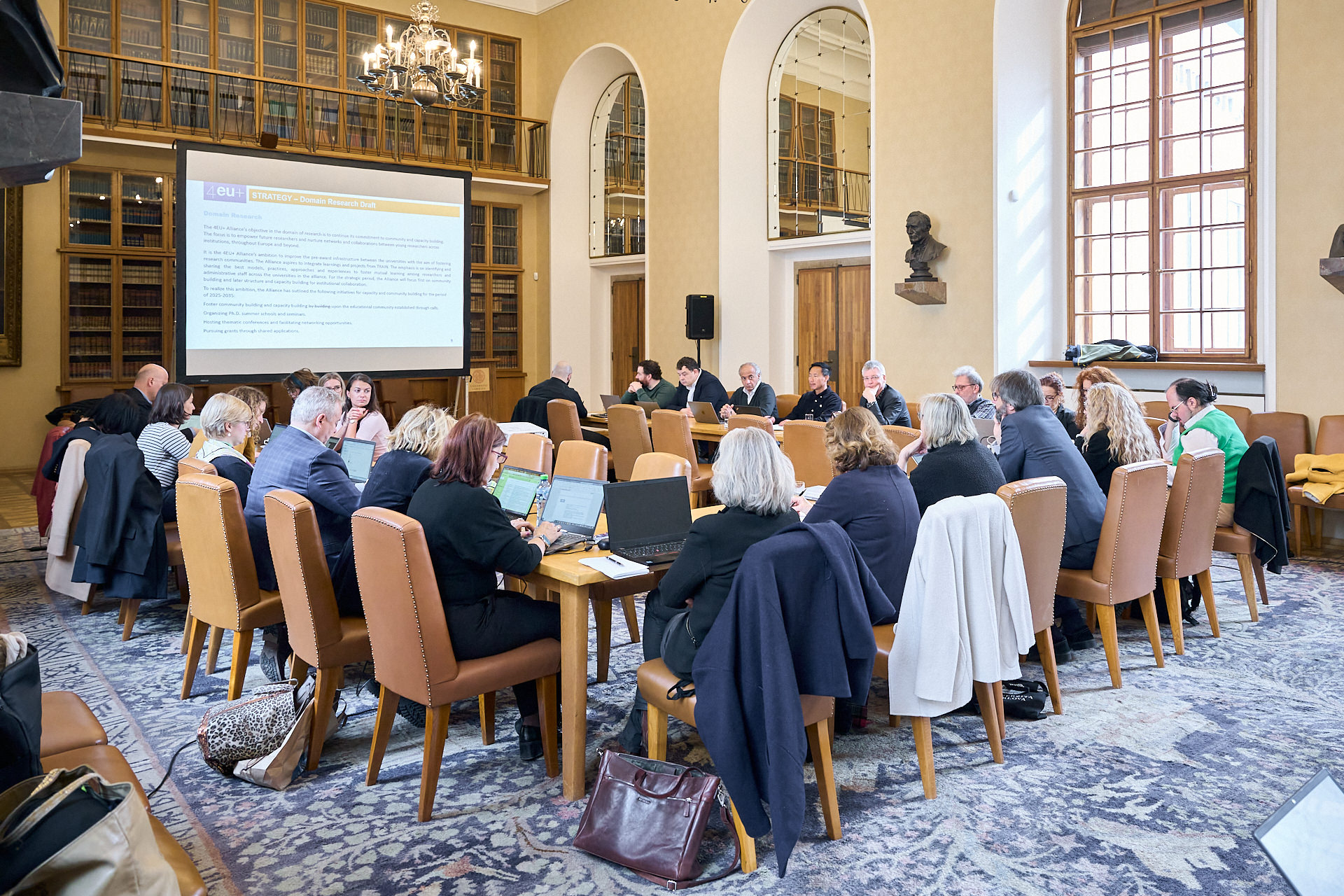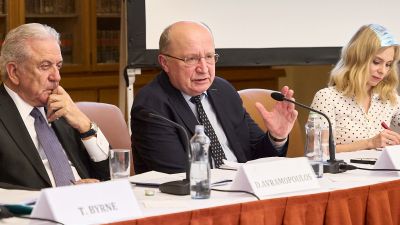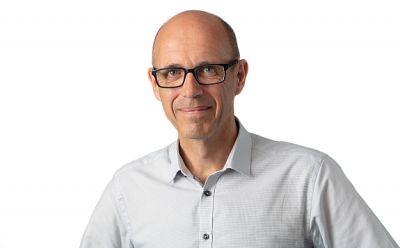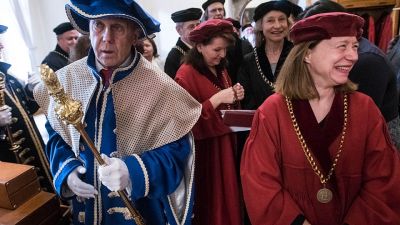Representatives of the eight prestigious universities that make up the 4EU+ Alliance met over two days at CU this week to chart the course for the coming decade. Charles University, as one of the founding members, was a fitting venue for a meeting which outlined the newest alliance goals.
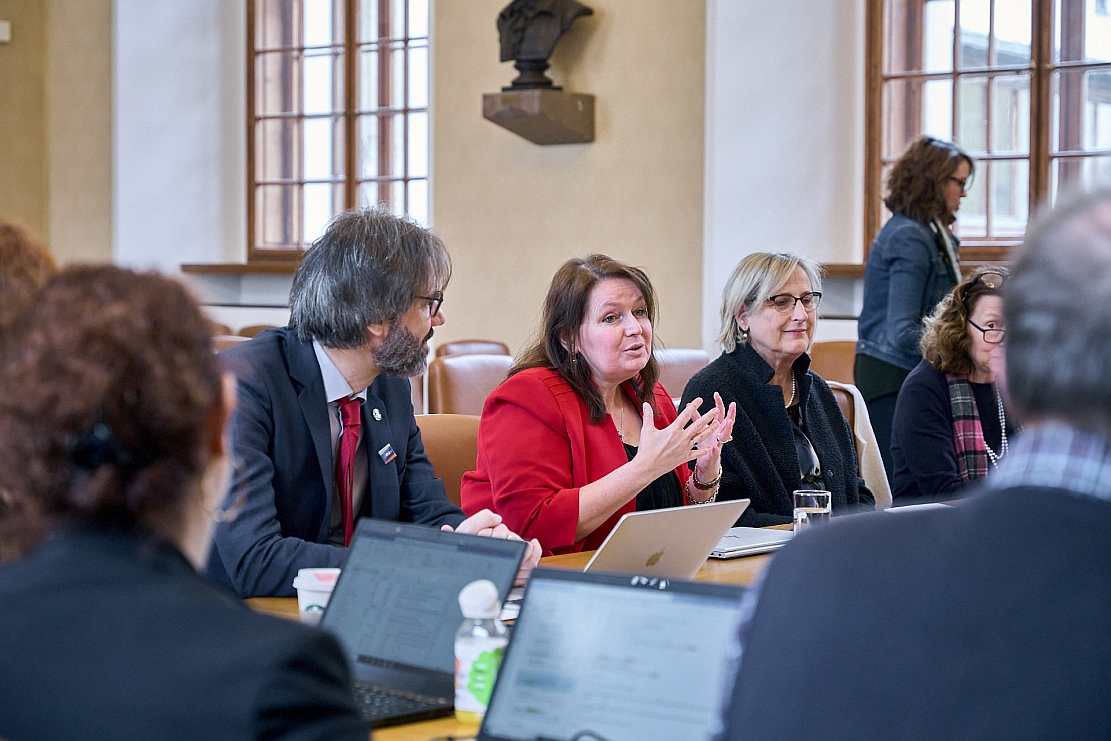
Charles University Rector Milena Králíčková opens meeting of 4EU+ Alliance reps at the Hall of Patriots in the Carolinum on 24 April 2024.
When 4EU was founded in 2018 it still lacked the + sign and, as the name suggests, had just four prestigious members. Fast forward to 2024, 4EU+ now consists of eight research-intensive universities, with the University of Geneva and Paris-Panthéon-Assas University, having been the latest to join in August 2022 and July 2023, respectively. More and more students and staff have become familiar with the alliance’s existence and goals. If not, a brief statement at the alliance website goes a long way: “the partnership grew out of the idea of a European university based on academic freedom and autonomy in the aim of offering equal access to education”.
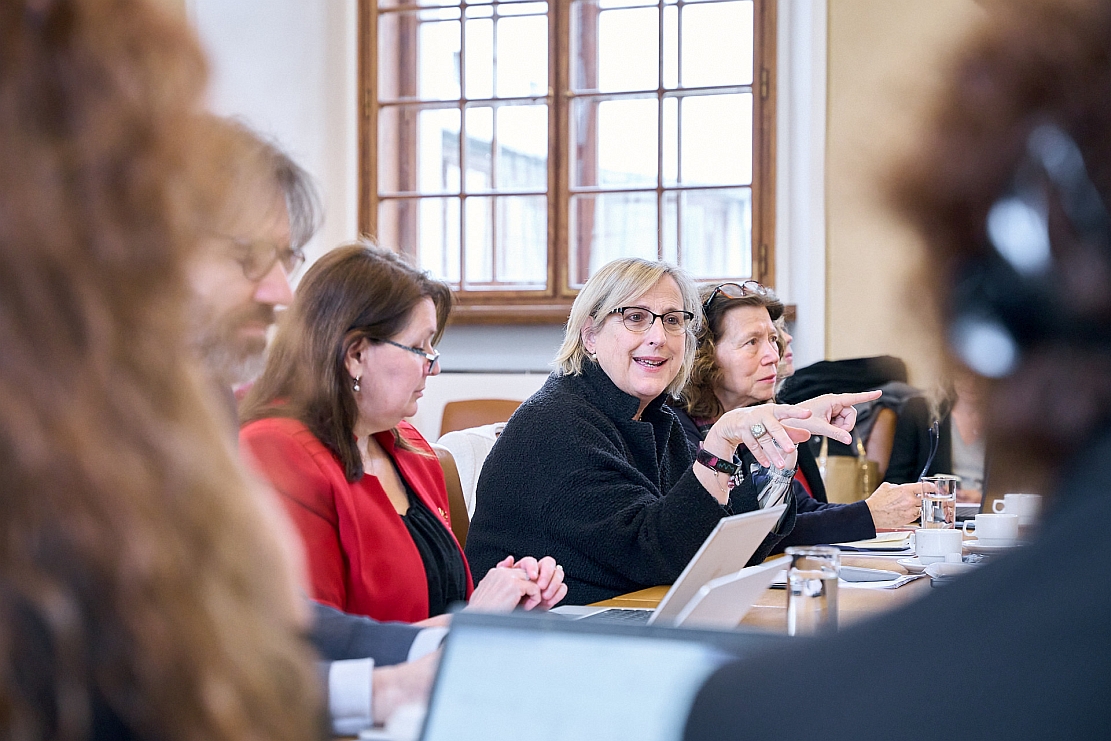
The University of Milan's Antonella Baldi gave the opening presentation, outlining the strategy for 4EU+ over the next decade.
That remains true today and is more relevant than ever as newer members came on board, broadening the potential audience and overall impact. At the same time, there is still a lot of work to be done in promoting options. Awareness of 4EU+ programmes that benefit students but also academic and non-academic staff, has improved but still needs to be more widespread. At least, that’s that how one representative from the Academic Council, a medical student from the University of Copenhagen, Jesper Gür, saw it when he spoke to Forum magazine.
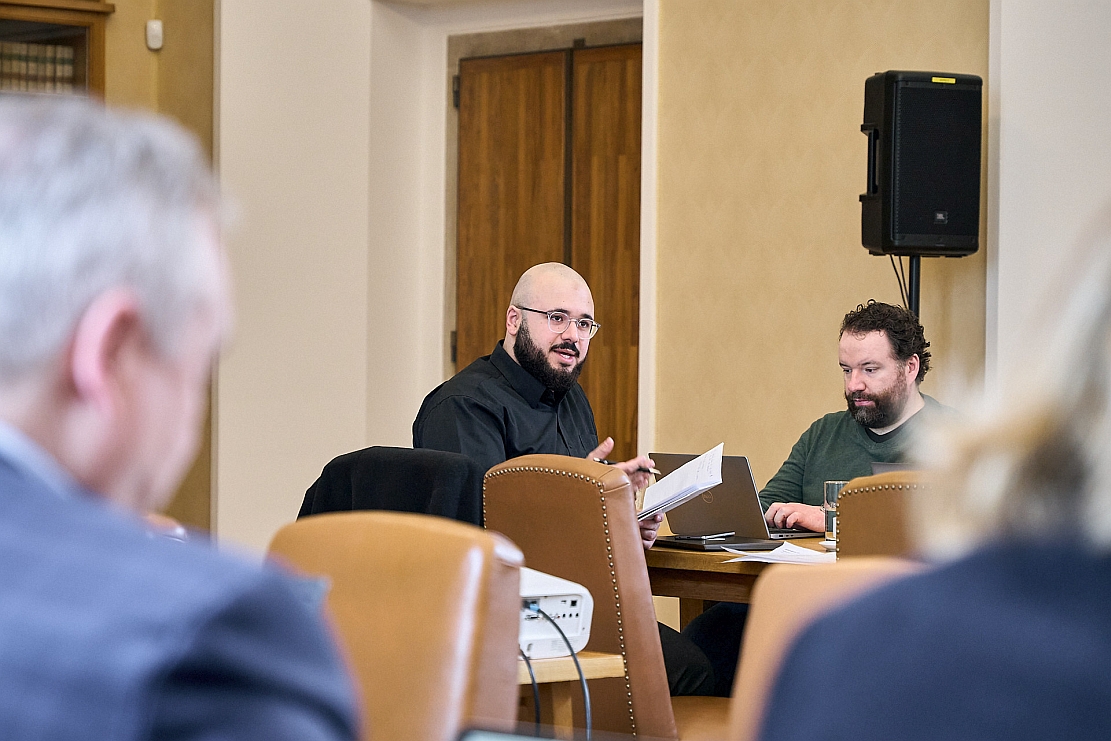
University of Copenhagen medical student and member of the Academic Council Jesper Gür in discussion at the Prague 4EU+ meeting.
“I think we are moving in the right direction because we have a general goal which is very tangible for the students. At the same time, this opportunity or framework is not apparent to everyone, but mostly to specifically-interested students. I think we need some central improvements to inform more people [about opportunities].”
Do local offices at each school have more to do in this respect or other university offices and media?
“It really depends on what tools they have at their disposal. At the moment, most of the information at the schools comes from individual faculties but not the local 4EU+ office so I think that ‘missing link’ should be improved, to align not only mobility and course options but also to outline what our values are and what we want to achieve on a meta level with the alliance, which is creating one European university.”
What does that really mean for students?
“From the perspective of our students, it should mean this: when they enrol at a European university, it should be a natural thing to go to other universities, to mingle with other cultures, to improve student lives, so that when students will come out at the end of their studies, we will have great researchers who collaborate across European nations and who will be the frontrunners of strong European infrastructure. We need to talk more and share our experience.”

Professor Lenka Rovná (with scarf) is a member of Charles University's Rector's Board for 4EU+.
Shared values were of course discussed on the second day of the 4EU+ meeting but the most important item on the agenda was more practical: a road map how to get there. The University of Milan’s Antonella Baldi presented a working document for 4EU+ outlining the direction the alliance should head over the next decade. Still being tweaked and revised, but very much nearing completion, a map which will lay down the strategy from 2025 – 2035. Professor Baldi made clear that while it was never possible to predict the future (something arguably learned the hard way from the Covid pandemic or the unexpected attack on Ukraine) it was nevertheless important to prepare in advance and lay down the direction the alliance will take. And while it is still a working document (and also largely a question of internal strategy) the focus more than ever is on offering new and equal opportunities for students, researchers and staff. Here is what Antonella Baldi had to say:
“While we cannot really predict what will happen in 10 years, we can try to figure out what we can do for the next generation of students, whatever the conditions will be in the future. That is why this meeting is very important for us.”
Describing the fundamentals, Baldi emphasised that the stated strategy and purpose was one thing and the implementation another: steps taken according to a timeline and above all a practical action plan, where targets under individual domains (such as innovation and outreach) need to be properly supported and met. To the outside observer and seasoned insider alike, the process was - and is - nothing if not detailed, but each step was clearly defined, logically presented, and designed with such internal resilience and vibrancy that it was also inspirational. Not only because of the nuts and bolts – ie. what is on offer in terms of programmes, etc., but what they represent: shared values and experience. Something bigger, the meta that Jesper Gür describes. Something transformational. The alliance’s latest steps, outlined in 2022 are highlighted at the 4EU+ website but they are only part of the story:
“In the new project, the 4EU+ Alliance will focus on consolidating a model of One Comprehensive European Research University based on a common multi- and inter-disciplinary educational offer, research-based, innovative pedagogies and enhanced physical and virtual mobility. Through 1CORE, we aim to deepen the multidimensional student-centred approach, develop new joint digital infrastructures and services, with the view of further improving the already existing governance and management framework.”
It is also about transformation - creating a Europe of the future.
The alliance has a very clear idea of how to move forward and which areas need work and special focus and attention. Steering such a mammoth ‘ship’ is the work of countless reps and officers at the individual universities, countless hours and regular, sometimes intense communication back and forth on multiple levels. Yet the results have already been experienced by numerous students and staff. While schools can arguably be doing more to raise awareness of effective programmes, much of the infrastructure already exists and you can keep up-to-date with the latest developments at the 4EU+ Alliance website. Even if you are not sure 4EU+ is for you, look it up - there is nothing ‘sorrier’ than a great opportunity missed.


